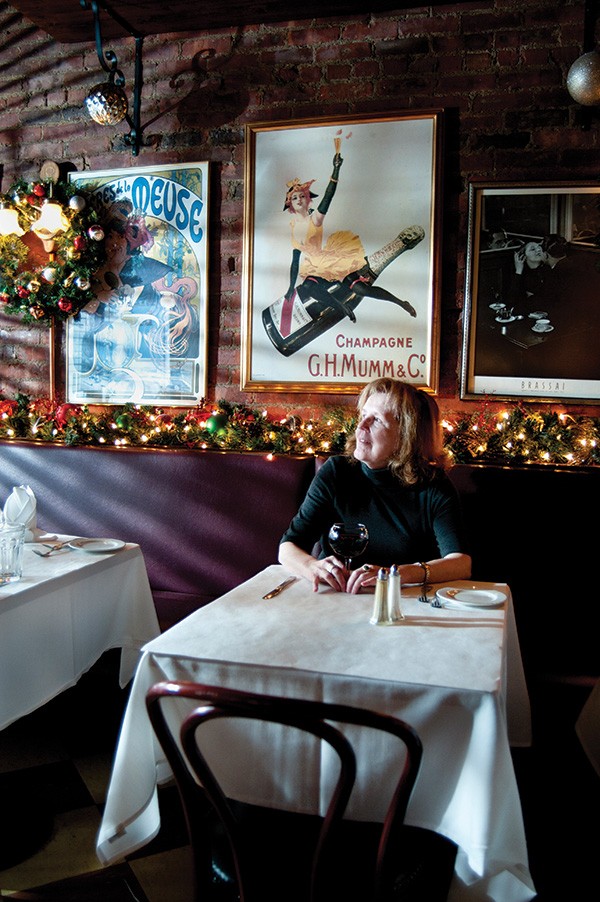I think of myself as an escape artist. I like to take people away." Janet Hamill leans over a table at Kingston's Le Canard Enchaine, explaining why she's never kept journals and doubts she'll be writing a memoir anytime soon. The poet and spoken word artist continues, "I'm interested in creating worlds, not describing the one we live in."
Hamill's just-published Tales from the Eternal Café (Three Rooms Press, 2014), attests to her skill at spiriting readers to faraway places. Its 17 stories unfold in locales ranging from 19th-century Brussels ("Baudelaire at the Prince of Wales") to hippie Morocco ("Tangiers Dejoun"); "Novalis" takes place in a Times Square magicians' supply shop and adjacent café.
"Café" is the magic word that links these disparate worlds, as Hamill's chameleon voice waves the silk over the hat. It's tempting, in fact, to take her book on a literary pub crawl, reading each tale in a different café, between sips of something thematically apt.
Though Tales From the Eternal Café is her first fiction collection, Hamill has published five books of poetry, most recently, Body of Water (Bowery Books, 2008), and recorded two spoken-word CDs. An ardent conversationalist, she has searching, intelligent eyes and a high forehead framed by a reddish corona of flyaway hair. Her speech has a distinctive New Jersey timbre; a Garden State Henry Higgins could peg her within a few turnpike exits of Palisades Park. (The vintage amusement park's closing, she says, was "one of the great losses to humanity. Oh, oh!")
Hamill was born in Weehawken, across the Hudson from midtown Manhattan. She was the second of five children, and her family soon moved to suburban New Milford, still tantalizingly close to the city she calls "a magical place." At 14, she was taking her younger brother and sister to Radio City Music Hall. Her father commuted to work at a Wall Street credit company; her mother kept house. "No one had ever gone to college. It wasn't that kind of family," she says. "The only reading material in the house was the World Book Encyclopedia and Golden Books." But the Catholic Church fueled her imagination. "Angels, God—the ritual of it—incense, flowers, the pageantry! I've never been able to handle the real world. I just found it bland and gray."
Bland didn't stand a chance. In high school, religion gave way to poetry, thanks to a "wonderful English teacher" who "looked like Greta Garbo; she'd been a floor model." After a weekend assignment reading Thomas Gray's "Elegy Written in a Country Churchyard," Hamill says, "I remember sitting in the living room on a rainy day and being completely transformed."
Gray's words—"If chance, by lonely contemplation led, / Some kindred spirit shall inquire thy fate"—may still have been ringing in her ears when she met another out-of-the-box Jersey girl at Glassboro State College. Patti Smith was a year ahead. She was majoring in art, Hamill in English. "We were part of a small beatnik coterie, both active on the literary magazine and in theater," Hamill reports. They acted, designed sets, directed; they read and wrote with a passion. Smith writes in her foreword to Hamill's Nostalgia of the Infinite (Ocean View Books, 1992), "In callow years we shared much trouble, much laughter and lavished our girlhood love on the likes of Byron and Rimbaud. Often, when not having the price for a proper supper, we would dine on one another's work, concord in the desire to one day create, not without sacrifice, something fine."












